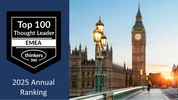The 'luxury' retail sector is driven more than any other by 'lifestyle and experience'
For the wealthy to 'feel' wealthy they crave the ability to buy what the rest of us cannot afford, then show it, and themselves off.
What's the point in having all those success badges of financial honour if there's no one to show them off to?
With international travel at an all time low we are seeing numbers from major capital cities telling us that not only are mainstream retailers feeling the pinch from lack of footfall, but it's also impacting on those retail brands we have long envied in the luxury sector.
Whatever your view, or size of wallet if luxury retail is saying it's struggling then the rest of the retail sector will continue to scratch its head around how to get consumers out of the safety bubble and back to some form of mass shopping.
The United Nations World Tourism Organization predicts the number of international tourists globally will fall by 60%-80% in 2020 as a result of the pandemic.
London’s central shopping hub of the West End, which includes Oxford Street, Bond Street and Regent Street, has been particularly badly affected. Footfall is down 72% year on year for the period since stores were allowed to reopen on 15 June, as international visitors stay away and domestic tourists avoid the normally heaving hotspot.
If retail spent a lot more time focusing and obsessing on changes in consumer behaviour as opposed to waiting for this pandemic to sort itself out, combined with making things incrementally better from an internal perspective we might actually start to see some green shoots of customer centric innovative thinking.
As the retail sector continues its unbundling of department store and big box formats there is a glimpse of hope, but it requires an agile and open mindset from leaders and employees alike.
The first step is to get back to the basics and focusing on the customer’s wants and needs, building trust, and demonstrating that our appreciation of the individual shopper goes beyond the sum and substance of his/her transactions.
'Visual Merchandising' teams are the extremely creative people who most of the time are utilized by retailers to 'dress the window', position the 'promotion's', and generally create visual magic from extremely tight budgets and available resource.
When done right visual merchandising (VM) has the ability to literally create a silk purse out of a sows ear, which in turn can draw people in off the street and help turn a window display into a great revenue generator.
Amid massive global economic upheaval and an ongoing pandemic that shows no sign of vanishing any time soon, Loewe’s small, light, and nimble approach to China — which remains meaningful and ultimately rooted in driving customers in its nearly 30 points of sale there — dovetails with its approach in traditional markets (where its Loewe en Casa immersive series on Instagram Live engaged housebound audiences in need of some culture). The approach is quiet enough to maintain a strong brand image, yet the brand is able to amplify it to promote specific collections or products by leveraging the right collaborators.
It is a measured online-offline luxury approach that looks perfectly designed for the decade ahead, whatever it ultimately brings.
Everywhere we look today we can access virtually any kind of content. If your on Facebook, Instagram, and now even on LinkedIn you will no doubt have seen the 'Go Live' function which allows anyone to suddenly become a 'live streaming' media star to the masses.
So, what if a retailer created that customer experience in the form of a pop up store, Xmas market style stalls, using social media as the communication channel and its audience as part of the 'live stream', thus leveraging the ability to stream to an already engaged audience - would that get people back to the stores?
If any of the above helped to stimulate thoughts and ideas and you would like to discuss how I might assist with your growth strategy - feel free to send me a DM.
London’s central shopping hub of the West End, which includes Oxford Street, Bond Street and Regent Street, has been particularly badly affected. Footfall is down 72% year on year for the period since stores were allowed to reopen on 15 June, as international visitors stay away and domestic tourists avoid the normally heaving hotspot.
 unknownx500
unknownx500











